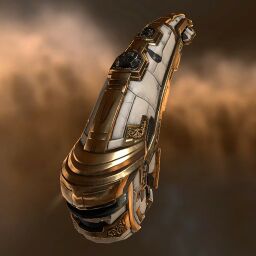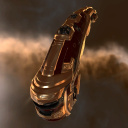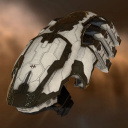
RELATED UNI-WIKI REFERENCES
|
In YC114 each major empire faction, having been embroiled in a harrowing, extensive, long-term war, recognized the growing need for support and logistics functionality in their vessels during the kind of protracted interstellar warfare that might otherwise prove exhausting for its participants. In the Amarr Empire, this led to the redesign and redeployment of the Inquisitor. SHIP BONUSES
Amarr Frigate bonuses (per skill level):
Ship Attributes
|
Summary
The Inquisitor is the Amarr Logistics Frigate; Inquisitor pilots repair their fleetmates’ ships during battle. The Inquisitor is bonused for remote armor repair, which matches the Amarr racial focus on armor tanking. The ship’s bonuses to remote armor repairer amount, activation, and range make the underwhelming base stats of small remote armor repairers practically useful. Flying the Inquisitor is a great first step in learning about Logistics. Inquisitor pilots often go on train into heavier Tech I logistics cruisers (such as the Amarr Augoror), and then Tech II logistics ships (including the Deacon and Guardian). But the Inquisitor is also effective all on its own, especially as a component of frigate or destroyer gangs, where speed is key.
One defining challenge of flying Tech I logistics frigates in general, and the Inquisitor in particular, is sustaining enough capacitor to run the ship. Remote repair modules are extremely cap-intensive, so the Inquisitor is typically fit to boost available capacitor—with a cap recharger or booster in a mid slot, capacitor control circuit or remote repair augmentor rigs, and, if necessary, “Enduring” remote armor repairers (which consume less cap). Training character skills that boost capacitor will also help. It might seem that fitting the Inquisitor with an afterburner instead of a microwarpdrive (MWD) could spare some capacitor. But the Inquisitor needs to keep up with its small-ship fleetmates in order to repair them, so it really needs an MWD. Pilots fitting the Inquisitor should use the in-game fitting simulation window, or an out-of-game tool like Pyfa, to match any fit to their specific skills and to gauge the ship’s cap stability. (This also means you may need to swap out modules on any pre-fit Inquisitor hulls that you purchase on corp contracts, to make them work with your skills.)
The Inquisitor has more tank and more native capacitor than any other Tech I logistics frigate, which make it a particularly effective logistics frigate. The Inquisitor and the Deacon, its Tech II cousin, are favored over the other racial frigates in gangs of small armor-focused damage-dealers (such as the Confessor, Coercer or Punisher). The Inquisitor is also a great ship for younger players to participate in small-ship shattered wormhole (C13) PvE.
Skills
Remote Armor Repair Systems I
Energy Grid Upgrades II
Afterburner I
Hull Upgrades II
Fitting
<wikifit shipid="590" doctrineid="35020" />
Tactics
New Inquisitor pilots should read the Tactics section of the UniWiki’s Logistics guide, and attend a Logistics 101 practical exercise; these will provide some details on how to fly logistics frigates. Some tips on flying the Inquisitor:
- Watch your capacitor, and activate modules only when needed. As explained above, you may not have enough capacitor to run every module, all the time. When you first land at an engagement, you’ll need to use your MWD to position yourself relative to the fleet. But then, once you are in position, you won’t need your MWD any more. Remember to turn it off!
- Likewise, as your fleetmates start to take damage, it’s easy to overreact by activating all three repairers at once. Instead, try to activate them gradually, one by one, to see if you can spare capacitor by running just one or two. And if you need to switch targets—say, because the enemy fleet has changed their primary—again, switch gradually.
- Stay moving, behind your fleetmates. One advantage of the Inquisitor is its small signature radius, which makes the ship difficult to hit. But this is only an advantage if you aren’t sitting still, so always be moving. Given this, you might be tempted to right-click your repair target and “Orbit at…” your optimal range. Keep in mind, though, that this will sometimes send your fragile frigate closer to the enemy than the damage dealers. Better, instead, to manually fly in a ring orbit behind the fleet, so that you keep range and stay out of the action.
Notes
While both Amarr logistics cruisers—the Augoror and the Guardian—are designed to fly as part of a cap chain, the Inquisitor frigate is designed to be self-sufficient when it comes to capacitor usage.
When comparing remote repair modules and self-repair modules, be aware that EFT reports self-repair rates in EHP/s, while the remote repair are reported as HP/s. The EHP/s is the hp/s divided by the average damage resistance.




